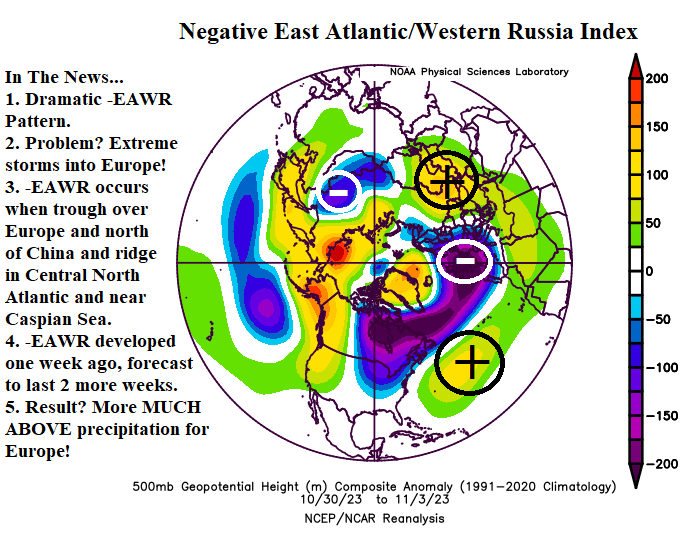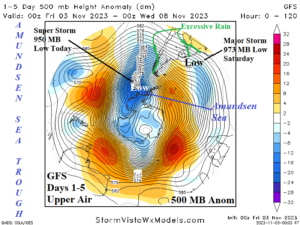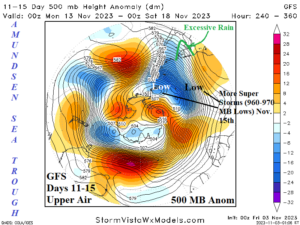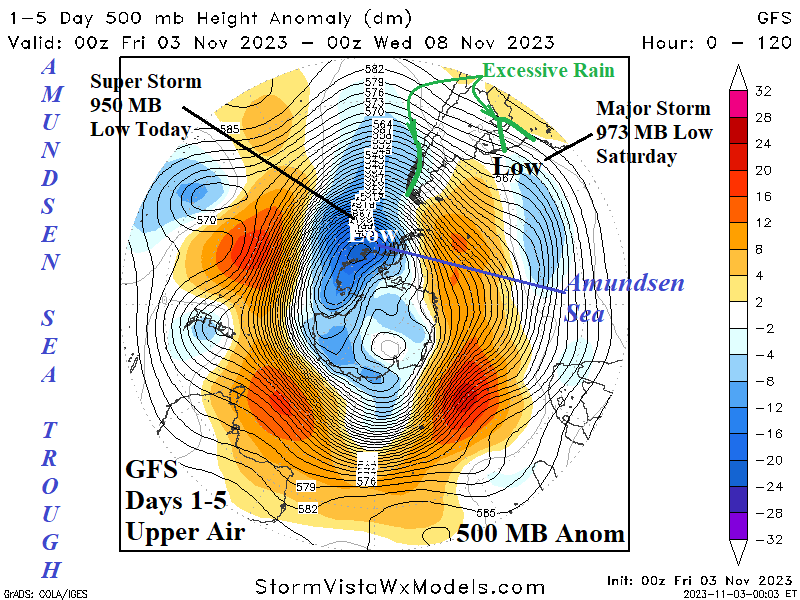
Key Climate Diagnostics: -SOI Weakens, Surging Snow Cover, NEP23A Backs Off Coast, and +IOD Strengthens
10/31/2023, 3:37 pm EDT
Strong Negative East Atlantic/Western Russia Pattern Soaks Europe
11/06/2023, 5:52 am EST 



Discussion: In the North Atlantic Ocean to the south of Greenland an area of stratified cool fresh water gathers after the accelerated snow and ice melt from Greenland and Northeast Canada each year during the past decade. The region of cool water is known as the North Atlantic warm hole (NAWH) due to its cool character surrounded by the warming North Atlantic since the late 1990’s. There appears to be a similar feature off the Antarctica Coast well southwest of South America also semi-permanent during the past decade or so but vivid since 2020. Across these semi-permanent cool SSTA regions the atmosphere also cools, and an upper low-pressure trough will form. This feature is semi-permanent in the North Atlantic and is compensated for by a downstream upper ridge yielding warm winters and increased drought risk during summer across Europe during the past decade. Similarly, the cool SSTA region well southwest of South America referred to by Climate Impact Company and the Amundsen Sea cool pool has also produced a semi-permanent upper trough. The current weather pattern identifies the upper trough extending from the Amundsen Sea north and northeastward in the current 15-day forecast (by GFS). Super low-pressure storms are generated beneath this trough also emitted northeastward to the east of the central and south coast of South America with trailing cold fronts bringing heavy rain to Southeast Brazil in the latest 15-day outlook. ENSO is a dominant force on South America climate. However, during the past decade, evolution of marine heat waves and cool pools on a regional scale and outside the tropics are gaining influence explaining and forecasting climate patterns.
![Climate-Impact-Company-logo-sm[1]](https://climateimpactcompany.com/wp-content/uploads/2023/08/Climate-Impact-Company-logo-sm1.png)
